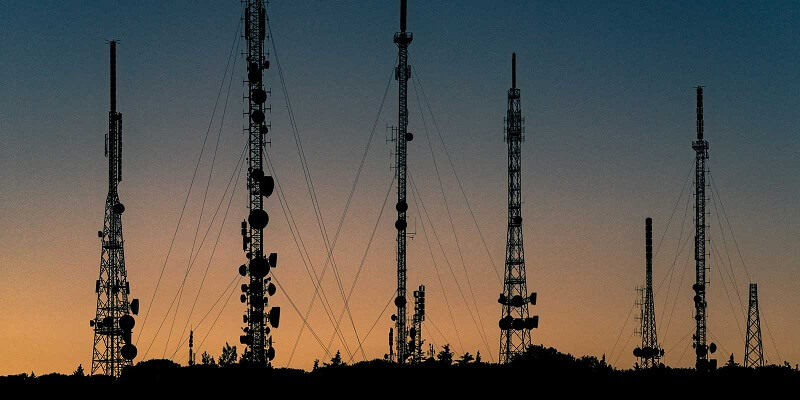Power innovation in connectivity and communications. Telecommunications companies, network providers, hardware/software vendors and service platforms are continuously developing new standards, protocols, network infrastructure and IoT/edge expansions. Many of these efforts meet the criteria for the federal R&D Tax Credit under IRC §41 and state incentives.


Examples of qualifying activities in telecommunications R&D
- 5G/6G Wireless Modulation & Network Trials Creating and testing new modulation schemes, beam‑forming arrays, massive MIMO prototypes, latency/stability trials.
- IoT/Edge‑Network Platform Development Building and testing platforms that manage thousands of devices, burst‑traffic simulations, edge compute integration, low‑power connectivity trials.
- Network Automation & AI/ML for Telecom Developing AI/ML systems that optimise network routing, self‑healing networks, interference management, experimental modelling.
- Satellite / High‑Altitude Platform Networks (HAPS) & New Band Spectrum Trials Prototyping new spectrum bands, hardware/software integration for satellite/IOT networks, field testing in harsh conditions.
- Network Security & Throughput Optimisation Designing protocols to resist attacks, validating latency and throughput improvements under stress, testing fibre/optical network upgrades.
What qualifies as R&D in Telecommunications?

To qualify, telecommunication‑related R&D must:
- Aim at a permitted purpose — such as a new wireless protocol (5G/6G), network‑management architecture, IoT connectivity platform, edge‑compute network optimisation, or next‑gen modulation/beam‑forming systems.
- Tackle technical uncertainty — for example: “Can we maintain 10 Gbps mobile throughput under 6G with < 1 ms latency?”, “Will the beam‑forming array adapt in urban multipath environments reliably?”, “Can the edge‑network manage massive IoT device burst traffic while maintaining latency and reliability?”
- Use a process of experimentation — lab trials, network test‑beds, simulation/modelling of propagation and load, iterative algorithm/hardware tweaks, field/trial deployments.
- Be technological in nature, grounded in communications engineering, signal processing, network architecture, software/hardware for telecom, IoT/edge computing, modulation or antenna design.
Qualified Research Expenses (QREs)
Roles commonly involved in qualifying activities
- Communications / RF Engineers & Scientists
- Network Architecture Engineers (5G/6G, IoT, Edge)
- Software/AI Engineers focused on network optimisation
- Field Trial/Test Engineers & Data Scientists
- IoT/Edge Connectivity Engineers
- External research partners or labs for spectrum/hardware trials
What does not qualify
- Routine build‑out of standard network infrastructure without documented experimentation
- Using off‑the‑shelf telecom modules without innovation or testing under uncertainty
- General business, marketing, logistics, or install/maintenance tasks
- Infrastructure purchases and standard deployment without testing or experiment documentation
Compliance and Documentation
Following the One Big Beautiful Bill Act (OBBBA) signed July 4, 2025, §174 now allows immediate expensing of domestic research expenses for tax years beginning on or after January 1, 2025. Taxpayers may also elect optional amortization under new §174A. Foreign research expenses must still be amortized over 15 years. This is separate from the §41 credit but impacts overall tax planning.
Key documentation should include:
- Project summaries/hypotheses (e.g., “Can the 6G beam‑forming prototype reduce signal loss by 30 % in dense urban environments?”)
- Test‑bed logs, field trial data, iteration/version history of hardware/software, failure/re‑design records
- Staff time logs by project and research vs non‑research tasks, payroll coding
- Material/test‑equipment usage records, simulation/trial data, external test reports This supports the Four‑Part Test (permitted purpose, uncertainty, experimentation, technological) and audit readiness.
Frequently Asked Questions


Yes — if they engage in truly experimental work, developing new protocols, hardware, networks, or connectivity platforms rather than standard infrastructure deployment.


Wages of engineers and researchers, supplies used in prototypes/trials, cloud/simulation costs, and third‑party contract research.


Examples include 6G/IoT/edge‑network development, modulation algorithm testing, antenna or RF hardware prototyping, network automation via AI/ML, satellite or HAPS connectivity trials.


Routine network build‑out, standard maintenance or installation work, simply deploying off‑the‑shelf modules without experimentation, business/logistics tasks.


Maintain clear project objectives with technical uncertainties, logs of prototypes/trials/simulations, iteration history, test‑bed data, time tracking and external research documentation.
Next Steps
Use our calculator to estimate your potential federal and state benefits
Schedule a consultation to structure your row crop research activities
If you are innovating in agriculture, you may already be doing R&D. Let's make sure you are rewarded for it.
Contact Strike Tax Advisory
Ready to maximize your R&D tax credits? Get in touch with our team of experts.

Software & Technology
With just a little info, our Strike Experts can help you start your R&D tax credit journey.
Got questions?
We’ll walk you through our process and take the time to understand yours to make sure you get the most back.
Schedule a MeetingRelated Sub-Industries
Does your state qualify for the State R&D Tax Credit?
Benefits for the R&D Tax Credit vary from state to state. Get an accurate estimate of your potential state tax credit!






